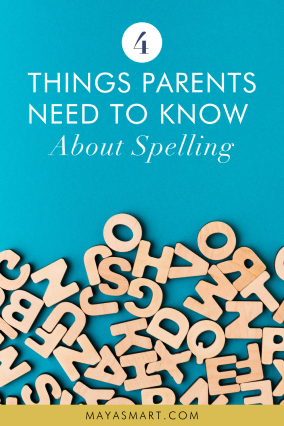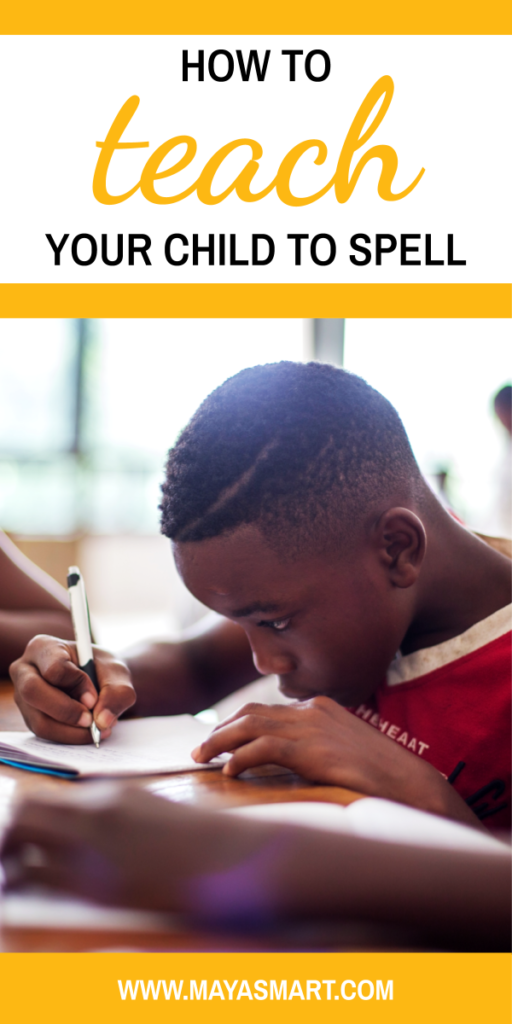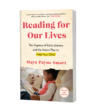
Sources and Further Reading
Martin-Lacroux, Christelle, and Alain Lacroux, “Do Employers Forgive Applicants’ Bad Spelling in Resumes?” Business and Professional Communication Quarterly (2016), https://doi.org/10.1177/2329490616671310.
Graham, Steve, Karen R. Harris, and Michael Hebert, “It Is More than Just the Message: Analysis of Presentation Effects in Scoring Writing,” Focus on Exceptional Children 44, no. 4 (2011): 1–12.
Rossi, Maya, Sandra Martin-Chang, and Gene Ouellette, “Exploring the Space Between Good and Poor Spelling: Orthographic Quality and Reading Speed,” Scientific Studies of Reading 23, no. 2 (2019): 192–201, https://doi.org/10.1080/10888438.2018.1508213.
Paige, David D., Grant S. Smith, Timothy Victor Rasinki, William H. Rupley, Theresa Magpuri-Lavell, and William D. Nichols, “A path analytic model linking foundational skills to Grade 3 state reading achievement,” The Journal of Educational Research (2018): 1–11, https://doi.org/10.1080/00220671.2018.1445609.
Graham, Steve and Tanya Santangelo, “Does spelling instruction make students better spellers, readers, and writers? A meta-analytic review,” Reading and Writing 27 (2014): 1703–1743.
Joshi, R. Malatesha, Rebecca Treiman, Suzanne Carreker, and Louisa C. Moats, “How words cast their spell,” American Educator 32 (2008): 6–16.
Emphatic and unsparing, Kiese Laymon’s Heavy explores the weight of wellness in a culture obsessed with lean. His expansive intelligence and fluid prose bear up to haunting family secrets and American deceptions with deep, potent wells of beauty, humor, and empathy.
Initially conceived as a weight-loss story chronicling his family’s struggles with food and violence, the writing of Heavy, which was recently named a finalist for the 2018 Kirkus Prize for Nonfiction, got murkier when relatives sidestepped his interview questions or lied altogether. “We’re a family, like most families, of addicts, but we never talked about the addiction,” he says. “We would talk about losing weight or gaining weight but we never talked about why. We never talked about particular memories around domestic, sexual, and racial violence.”
Continue reading “Kiese Laymon Discusses Heavy”Grandparents Day may be in September, but it’s well worth celebrating grandmas and grandpas and nanas and paw-paws year-round. After all, there are more grandparents today than ever before, according to The Census Bureau, and grandparents are playing a bigger role in more and more children’s lives. Grandparents are quietly, powerfully shaping children’s learning and literacy today in pivotal ways, as Maya wrote in Katie Couric Media.
The special ways grandparents love, teach, and relate to their children’s children is proven fodder for vivid, powerful storytelling. Look no further than these 12 books that are ideal for Grandparents Day and all year long. These books make great gifts for grandparents to share with grandchildren and also beautiful ways to treasure special memories. May they remind us of our elders’ wisdom, wit, and care, as well as the role we can play in fostering space for those irreplaceable bonds to bloom.
Grandparents’ Day may be in September, but a new crop of picture books is here to help us celebrate grandmas and grandpas and nanas and paw-paws year-round. That’s only fitting, because there are more grandparents today than ever before, according to The Census Bureau.
And the special ways they love, teach and relate to their children’s children is proven fodder for vivid, powerful storytelling. Look no further than these three titles I discovered at the Texas Book Festival. May they remind us of our elders’ wisdom, wit and care, as well as the role we can play in fostering space for those irreplaceable bonds to bloom.
Authors or illustrators associated with each of these books took part in the Texas Book Festival’s Reading Rock Stars program. This hands-on program sends nationally recognized authors into Title I schools in Texas to deliver dynamic presentations and give kids autographed books to take home. Want to support the program or bring it to your school? Click here to learn more.

Continue reading “Austin Woman: Maya Smart is Tackling Inequality One Book at a Time”

Continue reading “Austin Woman: Maya Smart is Tackling Inequality One Book at a Time”
Many picture books aim to spur conversation around the quirks of English spelling, but Beth Anderson’s An Inconvenient Alphabet is a class above. While alphabet books like the popular P Is for Pterodactyl highlight unconventional spellings without illuminating the why’s behind them, An Inconvenient Alphabet goes much deeper. It brings to life some of the history and power dynamics responsible for English spelling—in ways that intrigue adults and children alike.
The book explores the true story of Ben Franklin and Noah Webster’s shared belief that English has letters with too many sounds (think: the various g sounds in goat, giraffe, and laugh), sounds with too many letters (the k sound in chorus, kite, cat, and quiet), and some letters that just aren’t needed at all (the silent letters in lamb, walk, knock, give). The bright, energetic marriage of text and illustration powerfully presents their efforts to revamp spelling in the service of American unity, identity, and clear communication.
Letters themselves, the 26 we know plus others Franklin created that never took off, are important characters in the book. Designed to represent the sounds aw, uh, edh, ing, ish and eth, Franklin’s new letters are depicted as 3D models carried around in a sack and handed out for examination. When I read the book with my daughter, she anticipated objections to the new letters—they look funny, would be tough to learn, and would make old books harder to read.
Illustrated with color, movement, and flair, the lively letters heighten the smart, inventive book’s explanatory power. Kids can see the oddity of the proposed letters, as well as the resistance in the faces of townspeople when Franklin shares them.
When Franklin’s introduction of new letters flops, the book moves on to Webster—the founder of the famous dictionary. It recounts his attempts (and mostly failures) to make English spelling more phonetic by advocating for using existing letters differently. Namely, he pushed for getting rid of silent letters (thum vs. thumb), plus using one vowel for short sounds (hed vs. head) and two for long ones (seet vs. seat). We read about how a few of his changes were adopted in fits and starts, and others rejected wholesale.
“Next time you sound out a word, think of Ben and Noah,” the book concludes. “THAY WUD BEE PLEEZ’D BEECUZ THAT IZ EGZAKTELEE WUT THAY WONTED!”
Informative and funny, An Inconvenient Alphabet shows how English spelling represents much more than letter-sound correspondences. Letter sequences, it reveals, embody choices that people and publishers have made, based on their own accents, understanding, and ideas about the value of tradition.
And people’s resistance to purely phonetic spelling has something to teach also: that history and meaning matter—and old (spelling) habits die hard.
Do you think English spelling should be made more phonetic? If so, why? And whose pronunciation would you use as the model, given the range of English pronunciations around the world?

Sources and Further Reading
Treiman, Rebecca, “Teaching and Learning Spelling,” Child Development Perspectives 12, 4 (2018): 235-239.
Treiman, Rebecca, “Statistical Learning and Spelling,” Language, Speech, and Hearing Services in Schools 49 (2018): 644-652.
Sliter, L., “Cough, Cough: Here Are 10 Different Ways To Say ‘ough’,” Dictionary.com Everything After Z, accessed February 7, 2019, https://www.dictionary.com/e/s/ough/.
Treiman, Rebecca, and Brett Kessler, Kelly Boland, Hayley Clocksin, and Zhengdao Chen, “Statistical Learning and Spelling: Older Prephonological Spellers Produce More Wordlike Spellings Than Younger Prephonological Spellers,” Child Development, 89, 4 (August 2018): e431-e443.
Doyle, A., J. Zhang, and C. Mattatall, “Spelling Instruction in the Primary Grades: Teachers’ Beliefs, Practices, and Concerns,” Reading Horizons 54 (2015): 1–34.
Fresch, M. J., “A National Survey of Spelling Instruction: Investigating Teachers’ Beliefs and Practice,” J. Lit. Res. 35 (2003): 819–848.
Jones, A. C. et al, “Beyond the Rainbow: Retrieval Practice Leads to Better Spelling than does Rainbow Writing,” Educ. Psychol. Rev. 28 (2016): 385–400.
In English, there are 26 letters, 44 sounds, and 250 or more different ways to spell those sounds. That means phonetic spelling will only get kids so far. Yet how many times have parents uttered “sound it out” to a child asking how to spell a word?
Kids’ responses to this refrain are often as wrong as they are reasonable. Think: spelling does with duz. Silent letters, single letters representing multiple sounds, and a slew of sounds with the same pronunciation, but vastly different spellings, all complicate English. Not to mention letter combinations like -ough, which is pronounced ten different ways. Yes, ten. (Rough, plough, through, slough, though, cough, hiccough, thought, thorough, lough.)
Don’t get me wrong: knowing how sounds typically correspond to letters is crucial for approximating spelling. But when there are multiple phonetically plausible options, spellers need more information to choose the correct one. There are three main ways they tend to get this information: exposure, memorization, and instruction.
Let’s take a look at each to gain insights that can help us parents facilitate better spelling sooner—and bolster reading speed and comprehension to boot.
Exposure. Kids learn a great deal about spelling without being explicitly taught, and this learning begins as soon as they pay attention to print. Their environments—the books, signs, and other text surrounding them—provide the raw material for subconscious learning. Whenever kids lock in on the letters in books, on signs, on toys, and elsewhere, they begin soaking up and analyzing simple visual characteristics of written language.
Kids instinctively apply this knowledge of letter combination probabilities to even their earliest spelling attempts. Preschool-aged kids demonstrate unconscious knowledge of visual patterns in spelling, long before learning that letters represent speech sounds or starting to attempt to spell phonetically. They tend to write common letter sequences (like bi) more often than infrequent ones (like bn) in those seemingly random strings of letters kids produce early on, according to multiple studies. As they advance in age toward kindergarten, children tend to overuse letters from their own names, and letter combinations in alphabetic order, in their word-like scribblings. Their writing attempts reflect the print they’ve noticed most.
Researchers call this process “statistical learning,” because kids’ spelling efforts are informed by how frequently they’ve seen letters appear in certain combinations, orders, and positions within words. The children aren’t consciously counting the instances of various letter sequences or calculating probabilities, but they’ve gathered the data and synthesized it to inform their own writing, nonetheless.
But great spellers aren’t made through print exposure and reading alone. Unconscious pattern recognition has its limits. First, children have to have sufficient exposure to print and pay attention to it for statistical learning to kick in. In the beginning, this focus requires an adult directing them—for instance, pointing to the text accompanying an illustration in a picture book, or their name on a paper.
And the more complex, contextual, or rare the pattern, the harder it is and longer it takes to grasp subconsciously. Patterns that exist in one circumstance but not another are tricky. (Think spelling the short o sound with an a after w or qu—like in swab, squad, or wallet—but spelling it with o otherwise—like in odd, body, or olive.)
Simply put, formal spelling instruction offers a more direct path to the language knowledge that kids need, as we’ll see lower in this post. Exposure supports and lays the groundwork for that instruction.
Memorization. Students also learn to spell words by memorizing them, although this method works worse than you’d expect, given its popularity in schools. Spelling isn’t a solely visual task that can be learned effectively by copying words or staring at them. Teachers commonly report that the method fails to help kids spell on tests or in real-world writing.
Still, many instructors keep on outsourcing such busywork to parents, asking us to oversee nightly spelling practice in preparation for Friday quizzes. Not that the word lists and quizzes themselves are the problem; it’s the lack of instruction in how to learn the words.
First-grade homework folders from coast to coast often include “spelling spirals”—writing the week’s words in coil shapes—and “rainbow writing”—copying words using different colored pencils. These kinds of copying activities show up frequently in spelling programs, leading teachers to think they deliver key spelling practice in a fun package. But there’s little evidence they help kids learn—and they aren’t much fun, either.
A group of educational psychologists (three of whom are parents whose kids had been assigned rainbow writing) decided to test the value of copying words in different colors. They performed some small experiments with first and second graders to measure the rainbow writing’s value against something called “retrieval practice.” In the latter, the teacher dictates a word, the student spells the word on paper, and compares their spelling attempts to the correct spelling, then the student flips his paper over, and does it all again.
Though both are essentially memorization exercises, time spent exerting effort to recall or “retrieve” spellings (versus merely rewriting them) was more effective. Retrieval practice led to better spelling and the students reported liking it more, too. Still, one-off memorization of individual words, one by one, through either copying or retrieval practice leaves something to be desired. Namely, deeper knowledge of our written language.
Instruction. Unsurprisingly, students also learn to spell well when they are directly taught how the language works. Properly approached, spelling is a rich, multifaceted content area that includes many areas of instruction:
- Speech sounds: Discerning and segmenting consonant sounds, vowel sounds, and syllable patterns.
- Letter knowledge: Spotting, naming, and forming letters; knowing that they can represent speech sounds in writing; and having a sense of their typical positions and combinations within words.
- Spelling patterns: Knowing the most common spelling patterns and the patterns within the most frequently encountered words.
- Meaning: Identifying, analyzing, and combining bases, prefixes, and suffixes. Understanding how suffixes can change a base word’s number, tense, or part of speech.
- History: Recognizing that words come from a variety of sources, including other languages, and that their origin impacts spelling.
Practically speaking, just knowing that spelling is about more than sounding out words puts you ahead of the parent spelling-knowledge curve. Stay tuned for upcoming posts that tackle each of these spelling topics in turn.

Sources and Further Reading
Treiman, Rebecca, “Teaching and Learning Spelling,” Child Development Perspectives 12, 4 (2018): 235-239.
Treiman, Rebecca, “Statistical Learning and Spelling,” Language, Speech, and Hearing Services in Schools 49 (2018): 644-652.
Sliter, L., “Cough, Cough: Here Are 10 Different Ways To Say ‘ough’,” Dictionary.com Everything After Z, accessed February 7, 2019, https://www.dictionary.com/e/s/ough/.
Treiman, Rebecca, and Brett Kessler, Kelly Boland, Hayley Clocksin, and Zhengdao Chen, “Statistical Learning and Spelling: Older Prephonological Spellers Produce More Wordlike Spellings Than Younger Prephonological Spellers,” Child Development, 89, 4 (August 2018): e431-e443.
Doyle, A., J. Zhang, and C. Mattatall, “Spelling Instruction in the Primary Grades: Teachers’ Beliefs, Practices, and Concerns,” Reading Horizons 54 (2015): 1–34.
Fresch, M. J., “A National Survey of Spelling Instruction: Investigating Teachers’ Beliefs and Practice,” J. Lit. Res. 35 (2003): 819–848.
Jones, A. C. et al, “Beyond the Rainbow: Retrieval Practice Leads to Better Spelling than does Rainbow Writing,” Educ. Psychol. Rev. 28 (2016): 385–400.

It’s tempting to think of Angie Thomas’ YA novel The Hate U Give as being ripped straight from the latest headlines about an unarmed black person shot by the police. But that would miss the point that for many people, Thomas included, the news is not only news: it is lived experience—raw and achingly intimate. And the lives stolen are individual, particular to specific families, neighborhoods, and communities, not generic fodder for hashtags and sound bites.
Thomas says she sometimes has to turn off the television or step away from social media because after a while it feels as if the loss of black lives is mere entertainment or politics. “It’s personal for us,” she says. “We hear politicians and officials debate what’s happened and what’s happening. It’s like, Now really, do you not realize you’re talking about someone’s life here? What about the people who are mourning this?”
Continue reading “Angie Thomas Discusses The Hate U Give”On April 8, Ruthless Good: The Great Austin Scavenger Hunt will dispatch dozens of teams from the Long Center to crack clues, solve trivia challenges, and discover photo-worthy landmarks and locales. But the rolicking hunt’s true aim is problem solving on a much grander scale–bolstering equitable community-wide access to health, education and work.
Continue reading “Ruthless Good: The Great Austin Scavenger Hunt”

